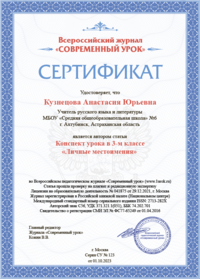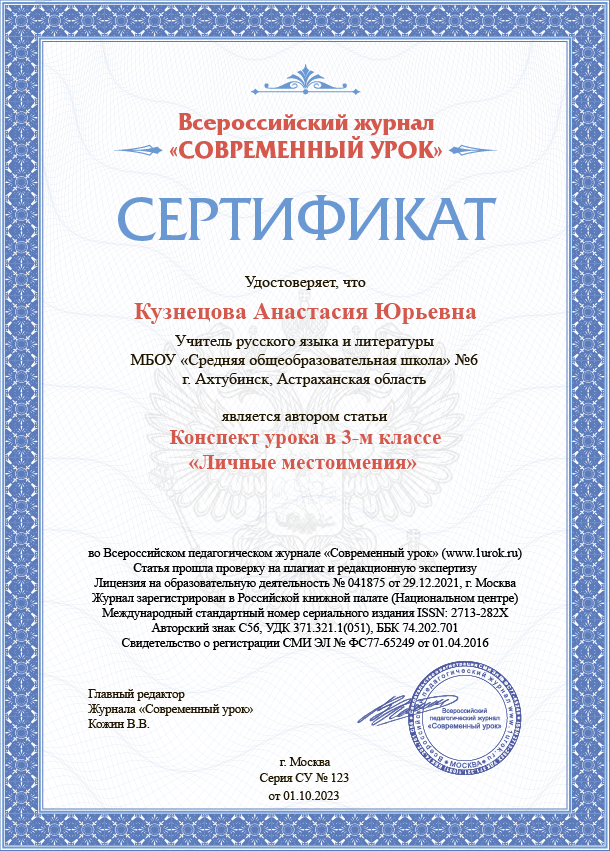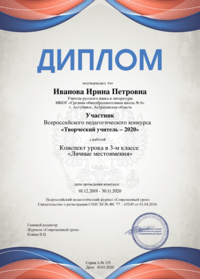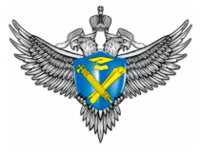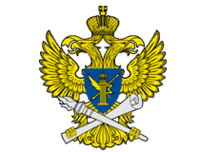Бинарный интегрированный мультимедийный урок по английскому языку в 7 классе “Likes and dislikes”
Автор: Лебедева Елена Владимировна
Организация: МОУ «Гимназия №29»
Населенный пункт: Республика Мордовия, г. Саранск
Цель урока: Активизация лексико-грамматического материала по темам: «Мои увлечения», «Праздники и традиции», «Степени сравнения прилагательных».
Задачи урока:
Обучающие:
1. Расширять лексический запас по теме.
2. Учить извлекать информацию из текста.
3. Учить строить аргументированные высказывания.
Развивающие:
1. Развивать навык чтения с общим охватом содержания.
2. Развивать языковую догадку.
3. Развивать интеллектуальную и эмоциональную сторону личности обучающихся.
Практические:
1. Уметь применять полученные знания на практике.
2. Уметь взаимодействовать с одноклассниками в процессе обсуждения.
Воспитательные:
1. Развивать эстетический вкус.
2. Воспитывать потребность расширять свой кругозор.
Планируемые результаты:
Личностные результаты: формирование ответственного отношения к учению, готовности к саморазвитию и самообразованию; формирование коммуникативной компетентности в общении и сотрудничестве со сверстниками; сформированность мотивации к обучению и основ гражданской идентичности, ценностно-смысловые установки обучающихся.
Предметные результаты: освоить и отработать лексические единицы по данной теме; освоить и отработать употребление в речи грамматической темы «Степени сравнения прилагательных»; прослушать и понять текст по теме урока и выполнить упражнения, используя языковую догадку.
Метапредметные:
Регулятивные: умение учиться и способность к организации своей деятельности (планированию, контролю, оценке); способность определять цели и следовать им в учебной деятельности; умение оценивать правильность выполнения учебной задачи; умение контролировать и оценивать свои действия, вносить соответствующие коррективы в их выполнение; умение работать индивидуально, парно и в группе. умение адекватно воспринимать оценки и отметки; умение оценивать значимость и смысл учебной деятельности для себя самого.
Познавательные:
Обшеучебные: развитие широких познавательных интересов и мотивов, любознательности, творчества; готовность к принятию и решению учебных и познавательных задач; развитие познавательной инициативы (умение задавать вопросы, участвовать в учебном сотрудничестве); выбор наиболее эффективных способов решения задач в зависимости от конкретных условий;
Логические: умение логически рассуждать; умение классифицировать по заданным основаниям; умение анализировать, устанавливать причинно – следственные связи; умение выражать смысл ситуации различными средствами (схемы, знаки); умение выбирать, сопоставлять и обосновывать способы решения.
Коммуникативные: умение находить общее решение практической задачи (приходить к компромиссному решению); формулировка собственного мнения и позиции, способность аргументировать и координировать её с позициями партнёров в сотрудничестве при выработке общего решения в совместной деятельности; умение с помощью вопросов выяснять недостающую информацию; адекватно использовать речевые средства для решения различных коммуникативных задач.
Оснащение урока: CD записи, презентация Smart Notebook и Power Point, обучающие программы, карточки, распечатки.
Основные этапы урока:
1. Warming up
2. Make up mini-dialogues “What is your hobby?”
3. Ask your friend: “What is your favourite…”
4. Stories “Festivals in the UK”
5. Listening “Christmas” (exercises)
6. “Adjectives. Degrees of Comparisons” – правила, упражнения.
7. Relaxation
8. Songs
9. Students` presentations
Ход урока:
1. Приветствие. Определение и сообщение темы.
Teacher - Good morning. How are you? Glad to see you.
Ученики смотрят видеосюжет “Likes And Dislikes” и сами определяют тему урока.
- The topic of our lesson is “Likes And Dislikes”
2. Речевая зарядка. (слушание и повторение произношения по теме)
Teacher – Let`s repeat. Say it quickly (скороговорка)
Yellow butter, purple jelly, red jam, brown bread
Spread it thick, say it quick
Yellow butter, purple jelly, red jam, brown bread
Spread it thicker, say it quicker
Yellow butter, purple jelly, red jam, brown bread
Now repeat it, while you eat it.
3. Беседа и введение в тему “What is your hobby?” (составление диалогов по теме c использованием фраз cо значением I like/L don`t like)
Teacher : Make up mini-dialogues about your hobbies. Use phrases with the meaning “I like/I don`t like”
P. 1 A. Do you like working on the computer?
P. 2 B. I like it a lot.
P. 1 A. Do you like shopping?
P. 2 B.I can`t stand it и т.д.
4. Беседа и введение в тему “My favourite …” (составление диалогов по данным фразам)
Teacher: You may like and dislike a lot of things: they are food, drinks, gadgets, colours. Ask your friend:
1) what his favourite colour is; (What is your favourite colour?)
2) what colour her favourite sweater is; (What colour is your favourite sweater?)
3) what his favourite food is; (What is your favourite …?)
4) what her favourite fruit is;
5) what his favourite drink is;
6) what his favourite sport is;
7) what her favourite kind of music is; (What is your favourite kind of music?)
8) what her favourite animal is;
9) what his favourite computer game is;
10) what her favourite book is;
Teacher: What is your favourite festival? (уч-ся называют свой любимый праздник)
5. Основная часть.
а) сообщения о праздниках Великобритании. (ученики делают сообщения по теме)
Teacher: I think your have different holidays with your families and friends. Now tell us some words about British festivals.
P.1 Great Britain is a country of traditions. Each season in Britain is connected with various colourful traditions, customs and festivals. March the 1st is a very important day for Welsh people. It`s St. David`s Day. He is the “patron” or national saint of Wales. The Welsh celebrate St. David`s Day and wear daffodils in their buttonholes of their coats.
P.2 For May Day people decorate houses and streets with branches of trees and flowers. Young men of each village tried to win with their bows and arrows. People put a striped maypole with flowers and danced round it.
P.3 In summer the British have “The Trooping of the Colour”. The Queen is the only person in Britain with two birthdays. Her real birthday is on April the 21st, but she has an official birthday too. It is on the 2nd Saturday in June. There is the traditional ceremony called “The Trooping of the Colour” and visitors watch Horse Guards` Parade.
P.4 Swan Upping. On the River Thames there are hundreds of swans which traditionally belong to the Royal family. The Queen`s swan keeper looks at all the young swans and marks the royal ones.
P.5 In summer Scottish people traditionally meet together for competitions called Highland Games. Thousands of visitors come to see sports like tossing the caber or throwing the hammer. The games always include Scottish dancing and bagpipe music.
P.6 The State Opening of Parliament. Traditionally the Queen opens Parliament every autumn. At the Houses of Parliament the Queen sits on the throne in the House of Lords. Then she reads the Queen`s Speech.
P.7 November the 5th is Guy Fawkes Day in Britain. All over the country people build “bonfires”. On the of each bonfire is a guy. That is the figure of Guy Fawkes who wanted to blow up the Houses of Parliament. But the plot was failed. Now children stand in the street and shout “Penny for the Guy”
P.8 Carol Singing. Originally, carols were songs performed with dancing at Christmas. Many of today`s carols have been written since the 19th century as Christmas hymns celebrating the birth of Jesus Christ.
Teacher: Let`s sing one of the famous carol “Silent Night” (видео, ученики поют песню)
Silent night, holy night,
All is calm, all is bright.
Round you V-gin Mother and Child,
Holy Infant so tender and mild
Sleep in Heavenly Peace
Sleep in Heavenly Peace
P.9 Christmas is the main public holiday in Britain and the US. This Christian holy day is held on December 25th (in Russia on January 7th) in honour of the birth of Christ. People often see it as a time of merry-making and present-giving.
P.10 There is a tradition that children should put a long sock called a Christmas stocking at the end of their bed or by the chimney or hang it by the fireplace so that Santa Claus will fill it with presents.
P.11 Young people are told that Santa Claus will bring them presents if they are good. Children sometimes write a letter to Santa Claus telling him what presents they would like for Christmas.
P.12 People usually send cards “Merry Christmas “ to their friends. Santa Claus, also called Santa, Father Christmas (in Britain), or Kriss Kringle (in America) is an imaginary old man in red clothes and with beard.
P.13 People usually decorate their houses and many people have a Christmas tree with coloured balls or lights on it in their house which they also decorate.
P.14 One of the popular carol is “Christmas Tree” (рождественский стих).
O Christmas tree, o Christmas tree,
With faithful leaves unchanging.
Not only green in summer`s heat;
But also winter`s snow and sheet.
O Christmas tree, o Christmas tree,
With faithful leaves unchanging.
б) упражнения на знание страноведческого материала.
Teacher – What holidays in Great Britain do you know?
Teacher – Each holiday has its own symbols. What are they?
6. Аудирование. Слушание и ответы на вопросы по прослушанному.
Teacher: – Now listen and try to understand.
Текст по аудированию. CHRISTMAS
CHRISTMAS is the most widely celebrated holiday of the Christian year. Christmas is observed as the anniversary of the birth of Jesus. Christmas customs are centuries old. Use of such plant as a holly comes from the ancient belief that such plants blossomed at Christmas. Comparatively recent is the Christmas tree, first set up in Germany in the 17th century and the use of candles on trees developed from the belief that candles appeared by miracle on the trees at Christmas.
Упр. 1 Вопросы:
1. What is Christmas devoted to? (It is devoted to the birth of Jesus)
2. Is Christmas tradition old? (Christmas tradition is centuries old)
3. What is the ancient belief at Christmas? (Plants blossomed at Christmas)
4. When and where is the Christmas tree first set up? (The Christmas tree first set up in Germany in the 17th century)
5. What else did people use for Christmas according to the text? (They used candles on the Christmas tree)
Упр. 2 True or False
1. Christmas is observed as the anniversary of the birth of Jesus. (true)
2. Christmas customs are rather young. (false)
3. Christmas tree was first set up in France. (false)
4, Christmas tree was first set up in Germany in the 17th century. (true)
5. The use of candles on trees developed from the belief that candles appeared by miracle on the trees at Christmas. (true)
в) упражнения на знание страноведения (в рабочей тетради).
Teacher: - Match the descriptions of these British customs and traditions with titles
Teacher: – We have two groups of students.
упр. 24, стр. 42 for the 1st group
1.Titles: a) Pancake Racing
b) Clottie Wells
c) Egg Rolling
d) Searching the Houses of Parliament
e) Ceremony of the Keys
упр. 1, стр. 59 for the 2nd group
2.Titles: a) The First Holiday of the New Year
b) Keeping Old Festivals
c) Pagan Festivals
d) The Last Day of the Old Year
e) Festivals Unite People Today
(ученики ставят заголовки к мини-текстам из рабочей тетради)
7. Релаксация. Песня “Merry Christmas” (презентация по песне)
Teacher : Let`s relax. Sing one of the famous “Merry Christmas” (ученики поют песню, которая сопровождается презентацией по этой песне)
Пр. We wish you a Merry Christmas – 3 раза
And a Happy New Year!
1. Good tidings we bring
To you and your kin
Good tidings of Christmas
And a Happy New Year!
Пр. Now bring us some figgy pudding – 3 раза
And bring some right here
2. Good tidings we bring
To you and your kin
Good tidings of Christmas
And a Happy New Year!
Пр 1. We all know that Santa`s coming – 3 раза
And soon will be here
Пр 2. We wish you a Merry Christmas – 3 раза
And a Happy New Year!
г) упражнения на знание страноведения (анимационная презентация)
Teacher: - Match traditions with the season
Winter St. David`s Day Guy Fawkes Day May Day
Spring Swan Upping Carol Singing
Summer The State Opening of Parliament Christmas
Autumn The Trooping of the Colour Highland Games
д) упражнения на знание страноведения
Teacher : What holidays in the UK and US are celebrated in winter? (анимационная презентация)
8. Грамматика. Прилагательные. Степени сравнения прилагательных
- правил образования степеней сравнения по таблицам.
Teacher – Let`s review the topic “Adjectives. Degrees of Comparisons”
а) Adjectives: Semantic Rows (прилагательные – «Семантические ряды»)
Teacher – Put the word to a certain row
- Size (размер)
- Weight (вес)
- Temperature (температура)
- Taste (вкус)
- Appearance (внешность)
- Traits of character (черты характера)
Tiny, warm, bulky, tall, sweet, heavy, attractive, light, salty, cold, bitter, broad, beautiful, curious, fat, honest, hot, smart
Ответы:
- Size: tiny, bulky, broad
- Weight: heavy, light, fat
- Temperature: warm, cold, hot
- Taste: sweet, salty, bitter
- Appearance: tall, attractive, beautiful
- Traits of character: honest, smart, curious
б) распределите прилагательные в два столбца по теме «Степени сравнения прилагательных». – учащиеся получают прилагательные на плакатах с положительным и отрицательным качеством по теме и распределяются по группам, затем прикрепляют на доску (распечатки)
Teacher – Find good or bad qualities of adjectives
Группа 1 Good Qualities Bad Qualities
Considerate, caring, strict, cheerful, greedy, gloomy, reliable, moody, patient, nasty, poisonous, delicious, broad, narrow
Good Qualities
Considerate, caring, cheerful, reliable, patient, delicious, broad
Bad Qualities
Strict, greedy, gloomy, moody, nasty, poisonous, narrow
Группа 2 Good Qualities Bad Qualities
Boring, bitter, attentive, lonely, polite, stupid, honest, modest, wicked, wise, heavy, light, spiteful, delicious
Good Qualities
Attentive, polite, honest, modest, wise, light, delicious
Bad Qualities
Boring, bitter, lonely, stupid, wicked, heavy, spiteful
в) соедините слова, чтобы получить устойчивые выражения по теме «Степени сравнения прилагательных» – учащиеся получают (распечатки)
Teacher – Match the words to get phrases (составление поговорок)
Comparisons
1) as poor as a) nails
2) as cold as b) a lion
3) as hard as c) a church mouse
4) as cool as d) ice
5) as brave as e) a daisy
6) as old as f) a lark
7) as happy as g) the hills
8) as fresh as h) a cucumber
Teacher – Find Degrees of Comparisons”
г) заполнить таблицы по теме «Степени сравнения прилагательных». – учащиеся получают разные варианты и заполняют таблицу по теме (распечатки)
Example:
|
Absolute (Positive) |
Comparative |
Superlative |
|
low |
|
|
|
pretty |
|
|
|
clever |
|
|
|
modern |
|
|
|
good |
|
|
Variant 1
|
Absolute (Positive) |
Comparative |
Superlative |
|
low |
lower |
the lowest |
|
pretty |
prettier |
the prettiest |
|
clever |
cleverer |
the cleverest |
|
modern |
more modern |
the most modern |
|
good |
better |
the best |
Variant 2
|
Absolute (Positive) |
Comparative |
Superlative |
|
hot |
hotter |
the hottest |
|
severe |
severer |
the severest |
|
useful |
more useful |
the most useful |
|
tender |
tenderer |
the tenderest |
|
bad |
worse |
the worst |
Variant 3
|
Absolute (Positive) |
Comparative |
Superlative |
|
nice |
nicer |
the nicest |
|
wealthy |
wealthier |
the wealthiest |
|
terrible |
more terrible |
the most terrible |
|
short |
shorter |
the shortest |
|
little |
less |
the least |
Variant 4
|
Absolute (Positive) |
Comparative |
Superlative |
|
independent |
more independent |
the most independent |
|
thin |
thinner |
the thinnest |
|
dull |
duller |
the dullest |
|
slow |
slower |
the slowest |
|
many |
more |
the most |
Variant 5
|
Absolute (Positive) |
Comparative |
Superlative |
|
greedy |
greedier |
the greediest |
|
smart |
smarter |
the smartest |
|
cheerful |
more cheerful |
the most cheerful |
|
sad |
sadder |
the saddest |
|
much |
more |
the most |
Variant 6
|
Absolute (Positive) |
Comparative |
Superlative |
|
wise |
wiser |
the wisest |
|
polite |
more polite |
the most polite |
|
pleasant |
more pleasant |
the most pleasant |
|
tidy |
tidier |
the tidiest |
|
young |
younger |
the youngest |
Variant 7
|
Absolute (Positive) |
Comparative |
Superlative |
|
educated |
more educated |
the most educated |
|
fat |
fatter |
the fattest |
|
strong |
stronger |
the strongest |
|
merry |
merrier |
the merriest |
|
far |
farther/ further |
the farthest/ the furthest |
д) определите разницу употребления farther/ further или the farthest/ the furthest - (слайды 7,8,9,10). – упр. 34, 35, стр. 121-122
9. Ученики представляют свои презентации по теме “I Like/I dislike”
10. Подведение итогов. Домашнее задание.
11. Окончание урока. Видео (песня-рэп по теме“I Like/I dislike”)
Список использованных источников
1. Формирование универсальных учебных действий в основной школе: от действия к мысли. Система заданий : пособие для учителя / под ред. А.Г. Асмолова. – М. : Просвещение, – 2012. – 159 с. : ил. – (Стандарты второго поколения). – С.155–158.
2. Балашова, А.И. К вопросу о развитии универсальных учебных действий / А.И. Балашова, Н.А. Ермолова, А.Ф. Потылицына // Муниципальное образование: инновации и эксперимент. – 2011. – № 5. – С. 69–73.
3. Гальскова, Н.Д. Межкультурное обучение: проблема целей и содержания обучения иностранным языкам // ИЯШ, – 2004. – №1. – С. 3–8.
4. Гузеев, В.В. Развитие образовательной технологии / В.В. Гузеев. – М.: Изд-во Московского ун-та, – 2009. – 128с.
5. Журина, Т.Ю. 55 устных тем по английскому языку. / Т.Ю. Журина. – М.: Дрофа, – 2009. – 159 с.
6. Лебедев, А.В. “Multinational Dialogue: Language and Art. Language and Culture/ Материалы. А.В. Лебедев. – Саранск: Изд-во Мордовского ун-та, –2014. – 258с.
7. Лингвистический энциклопедический словарь. / Под ред. Ярцевой В.Н. – М.: Советская энциклопедия, – 2000. – 578 с.
8. Longman Dictionary of English Language and Culture. – Oxford University press, – 2007. – 658 p.
9. Мильруд, Р.П. Максимова, И.Р. Современные концептуальные принципы коммуникативного обучения иностранному языку. // ИЯШ. – 2010, – № 4. – 29 с.
- Перминова, Л.М. Взаимосвязь стандартов первого и второго поколений / Л.М. Перминова // Народное образование. – 20 – № 7. – С. 209–216.
11. Самсонова, Т.В. Инновационная работа в образовательном учреждении / Т.В. Самсонова, В.Д. Маркеева. – Саранск: МРИО, – 2007. – 66 с.
12. Трофимова, Ю.М. Лингвистические и экстралингвистические проблемы коммуникации / Ю.М. Трофимова, К.Б. Свойкин и др. Саранск: МГУ им. Н.П. Огарева, – 2006. – 239 с.
13. Успенский, Б. А. Структурная типология языков. / Б. А. Успенский. М.: Международные отношения, – 2005. – 235 c.
14. Фурманова, В.П. Парадигма межкультурной коммуникации и методология преподавания иностранных языков / В.П. Фурманова // Межкультурная коммуникация: язык – культура – личность. Саранск : МГУ им. Н.П. Огарева, – 2007. – С. 6–9.
Список обучающих компьютерных программ:
1. “Tell Me More” (для начинающих, продолжающих изучать язык, желающих улучшить свои знания);
2. “World Around”;
3. “Professor Higgins”;
4. “Amusing English”;
5. “Learn English”;
6. “Instant Immersion English” (British and American).


